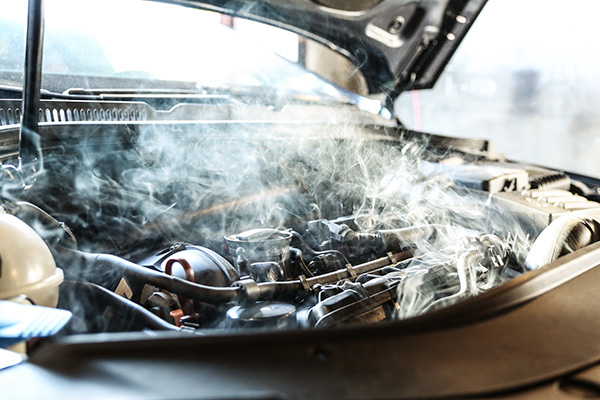
The cooling system in your car is responsible for maintaining a safe operating temperature of your engine, especially during hot days or heavy driving conditions. Without it, the heat generated by the engine would quickly lead to damage or failure. Despite its importance, many drivers overlook this system until something goes wrong, such as a temperature warning light, steam under the hood, or an engine that simply refuses to start.
Understanding how your cooling system works and what can go wrong helps you stay ahead of costly repairs and avoid breakdowns in the middle of traffic or on a summer road trip.
What Makes Up the Cooling System
Your vehicle’s cooling system is a network of components that work together to regulate temperature. The radiator, thermostat, water pump, coolant hoses, and the coolant itself all have distinct jobs. Coolant (also called antifreeze) circulates through the engine to absorb heat and then flows through the radiator, where it cools down before making another pass.
If any one of these parts fails or becomes clogged, the entire system can suffer. That’s why regular inspections and timely maintenance are key to avoiding overheating issues.
Signs Your Cooling System Is in Trouble
One of the first warning signs of cooling system failure is a rising temperature gauge on your dashboard. If it starts creeping toward the red zone, that’s your cue to pull over and shut off the engine before serious damage occurs. Another common symptom is visible coolant leaking from under the car, especially if it’s bright green, orange, or pink in color.
Other signs include:
- Steam coming from the engine bay
- A sweet smell, often associated with leaking coolant
- The heater inside your car suddenly blows cold air
- Rapidly fluctuating engine temperatures
These symptoms should never be ignored. A minor coolant leak today could lead to a blown head gasket or warped cylinder head tomorrow.
What Causes the System to Fail
Several factors can lead to cooling system issues. Over time, coolant breaks down and loses its effectiveness. Corrosion and buildup inside the radiator and hoses can restrict flow. A failing water pump won’t circulate coolant properly, and a stuck thermostat won’t allow coolant to move between the engine and the radiator.
Even something as simple as a loose or cracked hose clamp can allow air into the system, causing the coolant to boil and create air pockets that interfere with cooling efficiency.
Regular maintenance, including flushing old coolant and checking the system for wear, can help you avoid these issues altogether.
Summer Heat and the Cooling System
Hot weather puts extra strain on your engine, especially in stop-and-go traffic or during extended idling. If your cooling system isn’t in top condition, the summer heat can be the tipping point that pushes it past its limits. That's why pre-summer inspections are more important than you might think.
Checking coolant levels, inspecting hoses for softness or cracks, and testing the radiator cap to ensure it’s holding the correct pressure can all make the difference between smooth driving and being stranded on the side of the highway with the hood up.
Don’t Rely on Just Topping Off Coolant
Many drivers see a low coolant light and simply top it off without investigating why it’s low. But coolant doesn’t evaporate under normal conditions. If your levels are dropping, there’s likely a leak somewhere. Possibly small enough to ignore for a while but large enough to eventually cause damage.
A comprehensive pressure test can help identify hidden leaks and save you the headache of a major repair later on.
Trust the Experts at Central Automotive Service Center in Walnut Creek, CA
Your cooling system is too important to take chances with. Whether you’ve noticed warning signs or just want peace of mind before a long trip, let our team take a look. At Central Automotive Service Center in Walnut Creek, CA, we provide thorough inspections and professional cooling system services to keep your engine running smoothly and efficiently.
Don’t wait for the heat to strike. Stop by Central Automotive Service Center today and make sure your vehicle is ready to handle whatever the road and the weather throws your way.